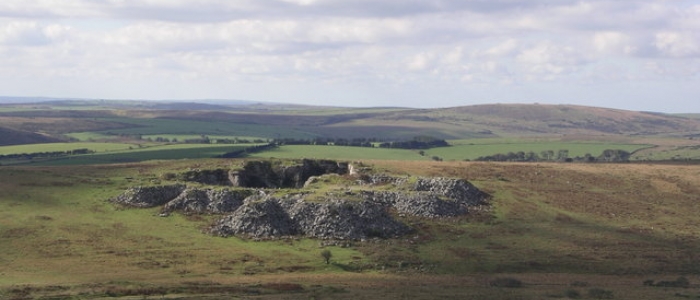
Bodmin, Cornwall
Landscapes
 By Jon Wright
Published 11 February, 2013
By Jon Wright
Published 11 February, 2013
Understanding landscapes unveils the wider character of our historic environment
The broader view of heritage
Covering wider areas of the historic environment and often encompassing a variety of individual historic assets, landscapes highlight an area’s character or defining features. They are crucial to understanding our heritage, containing much evidence of human activity and providing a broader view on the historic significance of our man-made and natural environments.
What is a landscape?
The definition of a landscape is very broad. They can be rural or agricultural, urban or industrial, coastal or marine.
The most recent international agreement, The European Landscape Convention (ELC), also known as the Florence Convention, was adopted on 2000 and came into force in the UK in 2007. It defines landscape as,
“an area, as perceived by people, whose character is the result of the action and interaction of natural and/or human factors”
This allows landscapes to include natural and manmade features, and boundaries to be defined not only by physical features such as rivers, or regulatory divisions like council districts but by any regions that people see as distinct. These can be as large as whole counties, or small scale built areas. The ELC specifically draws attention to the value of considering landscape as a basic component of our shared heritage and as an important contributor to quality of life. The convention promotes Europe-wide cooperation on the protection and management of landscapes and actively encourages public participation in the conserving and maintaining of them, particularly where planning issues are concerned.
Assessing significance
Depending on the size of the landscape in question, different techniques can be used to assess their significance. Historic area assessments and characterisation surveys are used to investigate the unique characteristics of a place. For a large area, like a whole town or part of a county, character areas will be identified. For smaller areas, more detailed information like individual building dates, uses and architectural styles will be taken into account.
Both the ELC and documents like Historic England’s Conservation Principles and Understanding Place value people’s interpretation of landscapes. The ECL allows people to define areas as they are special to them and communal value is one of Conservation Principle’s four main points to assess the significance of the historic environment.
People’s activities have much to do with shaping landscapes as we see them now. Whether they are built areas with obvious current activity, fields with underground archaeological features or shelter belts planted centuries ago, landscapes retain much evidence of human activity. They therefore can have historical and evidential values which should be protected for future generations.
Formal designation
Some landscapes are recognised as having national significance, and are therefore protected through statutory legislation. The legislation ensures that people both now and in the future can benefit from, and enjoy landscapes. It also ensures that the characteristics that make the place special are not harmed.
There are several types of protection for landscapes and areas:
- National Parks (England, Scotland and Wales)
- Areas of outstanding natural beauty (England, Northern Ireland and Wales)
- National Scenic Areas (Scotland)
There are 10 National Parks in England, 2 in Scotland and 3 in Wales. The land within them is often owned by private landowners and includes farms, countryside, villages and towns. National Park Authorities are responsible for protecting these areas and work with other organisations like The National Trust, the Forestry Commission, the RSPB and the Wildlife Trusts.
Areas of Outstanding Natural Beauty (AONB) have the same legal protection as National Parks but do not have their own authorities. Local authorities work with communities to ensure their protection, but will have other areas to look after too.
National Scenic Areas (NSA) are defined by Scottish legislation as areas “of outstanding scenic value in a national context”. This is another system which ensures the protection of nationally important landscapes through the planning system.
Conservation Areas
Conservation areas are usually designated by local councils to protect the character of a certain area. Character can be determined by a variety of different factors, both man-made and natural, so they may be urban areas, nature reserves, parks and streets. In urban areas, buildings, whether or not they are nationally or local designated as heritage assets, form important components of the character of the conservation area.
Areas of Archaeological Importance (AAI’s)
The Ancient Monuments and Archaeological Areas Act (1979) designated five places as part of a pilot scheme that was never followed up. The act identified the historic city centres of Exeter, Canterbury, Hereford Chester and York as AAIs and it was done to protect the below ground importance of these areas when any kind of disturbance is proposed.
Where to find out more
European Landscape Convention
http://www.coe.int/t/dg4/cultureheritage/heritage/Landscape/default_en.asp
For England
https://historicengland.org.uk/research/approaches/research-methods/characterisation-2/
For Scotland
http://www.historicscotland.gov.uk/index/heritage/valuingourheritage/historiclandscapes.htm
For Wales